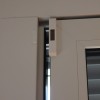Building 4.0 – a prerequisite for any energy refurbishment

If the world has always been faced with multiple challenges, it seems that in recent years everything is accelerating, and we are more than ever facing major problems. Without going into detail, I believe that changes in demography, climate change or health crisis do already result in economic and social shifts. In my opinion, digitization is one of the puzzle pieces to tackle all of this.
In this context, buildings and more broadly the city are at the heart of these challenges, because it is there that a good part of human life and activities are concentrated. At a time when we are experiencing a profound change in society and economy, a rethinking of buildings – and therefore the city – is required.
The digitization of buildings is therefore a necessity and a real opportunity to carry out this transition. It is also a first step to reduce the CO2 emissions drastically, as buildings alone account for nearly around 40% of total energy consumption with an impact of nearly 25% on greenhouse gas emissions.
Electrification of New York City in 1880
130 years ago, buildings and cities started to get electrified. It began in New York City with the so-called war of currents (DC/AC) between Edison and Tesla. 20 years later, this same city saw in only 10 years the change from horse-drawn carriages to thermal cars. The combination of these two transitions allowed cities to expand both vertically with the invention of elevators and horizontally thanks to new transportation options such as trains, subways, tramways and the already mentioned thermal cars. This has shaped the urbanism we know today, which – in view of today’s climate challenges – is no longer sustainable.

Why combine energy-efficient building renovation and digitization?
Today, digital technology is at the heart of all transitions. That means we have to rapidly deploy a digital infrastructure in all buildings, cities and territories that is capable supporting this transformation. This is undoubtedly the challenge of this first half of the 21st century.
Simply because of the increasing and changing energy consumption, e.g. through e-mobility, we need to switch to a carbon-free power supply as quickly as possible. Around 40 percent of greenhouse emissions can be traced back to electricity generation, while transport is responsible for 66%. Given these figures, it is clear that we need the support of state-of-the-art digital tools to manage the energy mix and adjust it as closely as possible to demand in real time.
E-mobility is power-hungry
For example, to illustrate this short-term challenge, by 2025 the number of electric cars in France is expected to increase to a minimum of two million vehicles. This represents an additional energy requirement of 5 to 6 TWh out of a total capacity of 500 TWh. In theory the grid is able to support this additional demand representing only 1% of the overall annual production capacity. However, it could be problematic if these 2 million vehicles were to recharge at the same time, with a load demand of 15 GW, or 15% of the capacity. This isn’t manageable without load shedding tools for other equipment connected to the grid or without using locally produced or stored energy.
By 2030, more than 30% of the car fleet is expected to be electric. About 90% of charging will be done in a building. It is therefore imperative to rapidly equip all buildings with a shared digital infrastructure and control tools to gradually absorb this overload.
Connected buildings as energy producer as well as consumer
It’s no longer possible to think in silos and to believe that vehicle charging could be done independently of the building’s other energy needs. It must be controlled in its entirety. This means that all the equipment and networks must be connected. The building will be both a consumer and a producer of energy. While electric mobility on the rise, the building will have to manage locally an energy mix combining centralized and decentralized production (PV, wind power, etc.) and storage (batteries, hydrogen, vehicle batteries (V2X), domestic hot water, etc.). This complexity will not be possible without the help of digital tools, in particular AI-based tools.
Energy-efficiency for buildings 4.0
The energy refurbishment of buildings, and in particular the introduction of solutions to control and increase energy efficiency, can be an excellent opportunity to deploy a shared smart grid in all buildings at the same time. It has already been proven that the implementation of energy efficiency solutions-based sensors and actuators – controlled by an application and connected to a digital infrastructure – can achieve an average of 25% energy savings. And that’s possible by just a better energy regulation as well as control of the presence of users or window openings. While the costs of the digital infrastructure can represent up to 25% of the investment, sharing it with other services will reduce the financial impact.
The investment needed to deploy energy efficiency solutions in a building is barely 10% of the investment needed to insulate it, but it results in 25% of immediate energy savings. Deployed on a massive scale, this will contribute to financing insulation work while bringing into each building a smart network necessary for the deployment of multiple services, starting with high-speed Internet, which must now be considered an essential service in the same way as water or electricity. This is the essence of a building 4.0.




